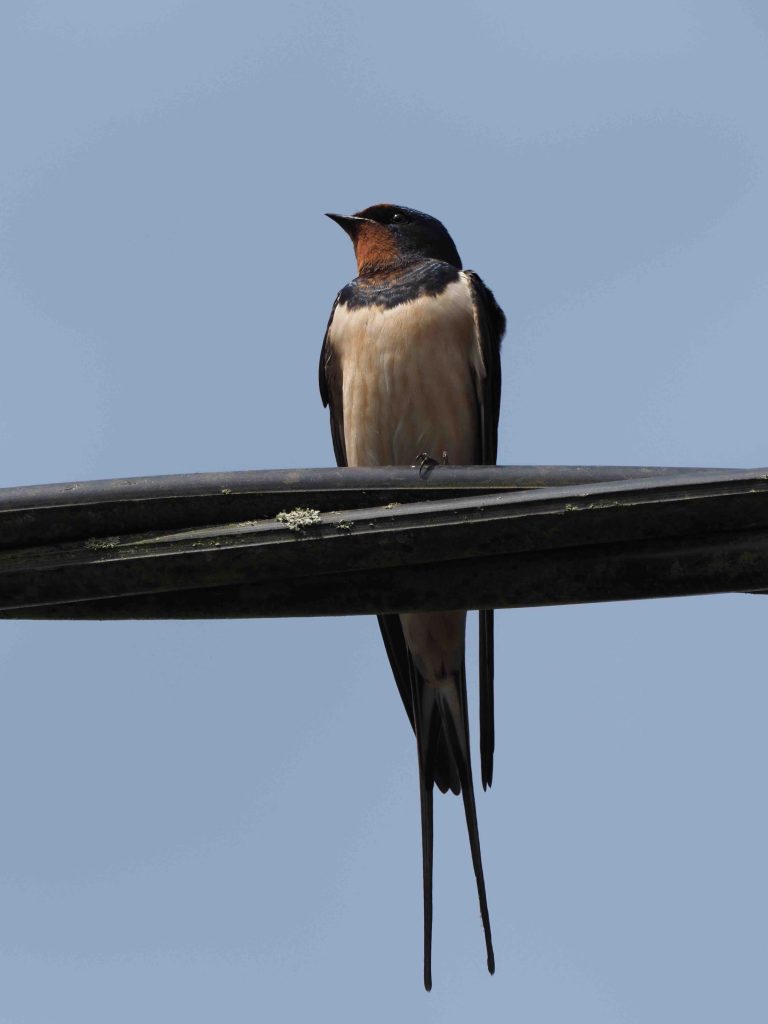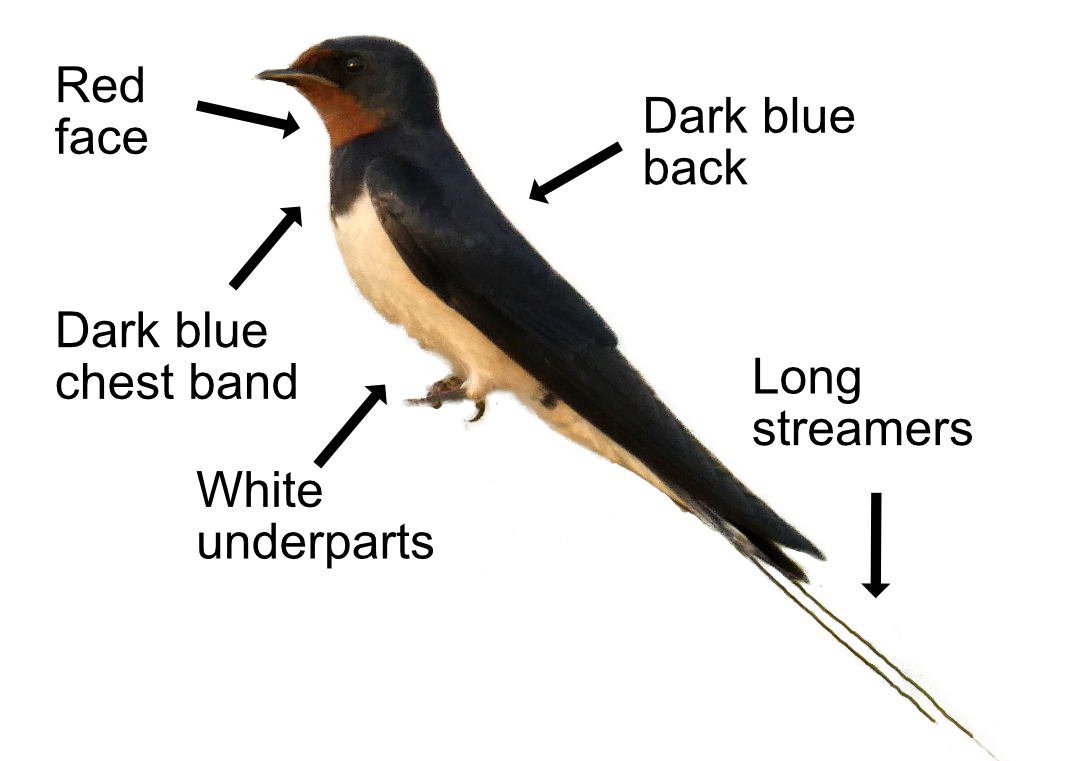
They are the Red Arrows of the fields with their red, white, and blue markings. To think they have been on safari in Africa with elephants and giraffes before coming here is awesome. Hearing their happy, chatty, twittering call not only lifts your spirits but heralds that summer is on the way. They are birds of open rural countryside - rare in urban spaces.
The Swallow is a sleek, slender bird with a deeply forked tail. They have a dark blue back, off-white underparts, a deep red face, and blue-black chest band. Their tails have long thin streamers whose length depends on their age and nobility. The tail has white spots underneath that are sometimes visible in flight. The wings are long and pointed. They love flying low over fields and water. When perched on branches, wires or TV aerials, they are very chatty with a liquid, happy, twittering call.
Swallows feed almost exclusively on flying insects like bluebottles, house flies, bees, hover flies, mayflies, flying ants, and moths which they catch on the wing. They have two foveae in each eye, giving them sharp lateral and frontal vision to help track their prey, and strong jaws with a wide gape to catch them. In poor weather, they will feed more over lakes and reservoirs. Their moult (feather change) is slow so it doesn't interfere with the ability to fly and catch insects.

Nesting starts from April, in barns or outhouses. The nest is a cup built from mud and lined with feathers and grass. Previous years' nests are often reused and the same pair of Swallows will return to the same site year after year. The 3-6 eggs hatch after 15 days. The young Swallows fly after 20 days and are fed for a further week. A brood of young Swallows needs about 6000 flies a day to survive. There are usually two broods and sometimes three. That is a lot of flies to catch! Farmers' use of insecticides to kill insects on their fields had a devastating impact on Swallows, but now many of these chemicals are banned and the Swallow population is stable. The loss of old buildings where they can nest is also a big worry, so put up a Swallow box!
The Swallow is a summer migrant, arriving in April and going by October. They migrate by day, feeding as they fly (most other birds feed during daytime and migrate at night). It takes about 6 weeks to get to Africa and about 4 weeks to get back. They often travel in tour groups with House Martins. In ancient times, when Swallows disappeared in winter, people thought they hid at the bottom of lakes.
There are 800,000 pairs in Britain. Their Latin name is 'hirundo rustica' where 'hirundo' is the Latin word for 'swallow' and 'rusticus' means 'of the country'. Americans call them Barn Swallows.